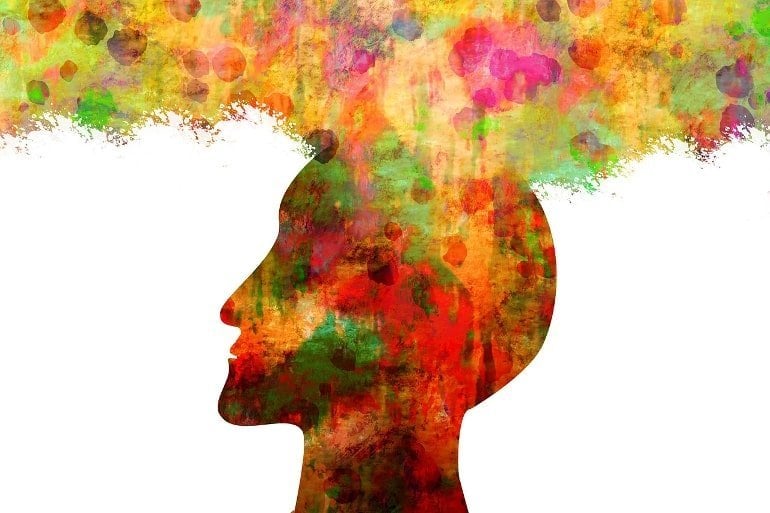Summary: The brains of highly creative people appear to work differently from those who are less creative in terms of connectivity, a new study reports.
Source: UCLA
A new study led by UCLA Health scientists shows highly creative people’s brains appear to work differently from others’, with an atypical approach that makes distant connections more quickly by bypassing the “hubs” seen in non-creative brains.
Exceptionally creative visual artists and scientists—called “Big C” creative types—volunteered to undergo functional MRI brain imaging, giving researchers in psychiatry, behavioral sciences and psychology a look at how regions of the brain connected and interacted when called upon to perform tasks that put creative thinking to the test.
“Our results showed that highly creative people had unique brain connectivity that tended to stay off the beaten path,” said Ariana Anderson, a professor and statistician at the Semel Institute for Neuroscience and Human Behavior at UCLA, the lead author of a new article in the journal Psychology of Aesthetics, Creativity, and the Arts.
While non-creatives tended to follow the same routes across the brain, the highly creative people made their own roads.
Although the concept of creativity has been studied for decades, little is known about its biological bases, and even less is understood about the brain mechanisms of exceptionally creative people, said senior author Robert Bilder, director of the Tennenbaum Center for the Biology of Creativity at the Semel Institute.
This uniquely designed study included highly creative people representing two different domains of creativity—visual arts and the sciences—and used an IQ-matched comparison group to identify markers of creativity, not just intelligence. The researchers analyzed how connections were made between brain regions globally and locally.
“Exceptional creativity was associated with more random connectivity at the global scale—a pattern that is less ‘efficient’ but would appear helpful in linking distant brain nodes to each other,” Bilder said.
“The patterns in more local brain regions varied, depending on whether people were performing tasks. Surprisingly, Big C creatives had more efficient local processing at rest, but less efficient local connectivity when performing a task demanding ‘thinking outside the box.'”
Using airline route maps for comparison, the researchers said the Big C creatives’ brain activity is akin to skipping flights to connecting hubs to get to a small city.
“In terms of brain connectivity, while everyone else is stuck in a three-hour layover at a major airport, the highly creatives take private planes directly to a distant destination,” Anderson said.
“This more random connectivity may be less efficient much of the time, but the architecture enables brain activity to ‘take a road less traveled’ and make novel connections.”

Bilder, who has more than 30 years’ experience researching brain-behavior relations, said, “The fact that Big C people had more efficient local brain connectivity, but only under certain conditions, may relate to their expertise. Consistent with some of our prior findings, they may not need to work as hard as other smart people to perform certain creative tasks.”
The artists and scientists in the study were nominated by panels of experts before being validated as exceptional based on objective metrics. The “smart” comparison group was recruited from participants in a previous UCLA study who had agreed to be contacted for possible participation in future studies, and from advertisements in the community for individuals with graduate degrees.
The researchers made efforts to ensure that age, sex, race and ethnicity were comparable to those of participants in the Big C groups.
About this creativity and neuroscience research news
Author: Press Office
Source: UCLA
Contact: Press Office – UCLA
Image: The image is in the public domain
Original Research: Closed access.
“Big-C creativity in artists and scientists is associated with more random global but less random local fMRI functional connectivity” by Ariana Anderson et al. Psychology of Aesthetics, Creativity, and the Arts
Abstract
Big-C creativity in artists and scientists is associated with more random global but less random local fMRI functional connectivity
Brain mechanisms underlying creativity are largely unknown and few studies have involved exceptionally creative individuals.
We examined functional MRI (fMRI) connectivity in a “smart comparison group” (SCG; n = 24), and in exceptionally creative (“Big C”) visual artists (VIS; n = 21) and scientists (SCI; n = 21).
Groups were matched on age, sex, and estimated IQ. FMRI scans were acquired during the resting-state and performance of two tasks: (a) alternative uses test (AUT), putatively measuring divergent thinking; and (b) remote associates test (RAT), putatively engaging convergent thinking. Graph theory measures of functional connectivity were compared across groups using generalized linear mixed models.
Global connectivity measures included small-worldness (indexing efficiency), clustering coefficient, and characteristic path length. Local connectivity measures included local efficiency and clustering coefficients within default mode, dorsal attention, frontoparietal, salience, ventral attention, and visual networks. During the resting-state, global small-worldness was lower for SCI than SCG; VIS had intermediate values.
Relative to SCG, the Big C groups had higher local clustering coefficients during the resting-state conditions but lower local clustering during the AUT condition. No significant differences were found during the convergent thinking test (RAT). These findings suggest that Big C creativity is associated with more “random” rather than more “efficient” global network functional architecture, with condition-dependent variations in local clustering and efficiency.
Large condition-dependent correlations between global and local clustering measures deserve further examination in exceptionally creative and other groups to more fully characterize the functional topology of brain networks most relevant to creativity.







